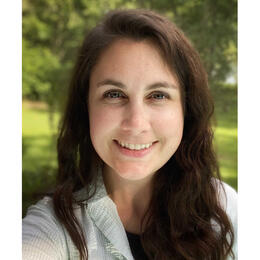It’s dawn in downtown Jacksonville. Most of the city remains asleep on these spring mornings, but volunteers are up and prepared with clipboards, bags, and carefully mapped routes. The Lights Out team is ready to collect data on bird-building collisions during migration.
The Lights Out Northeast Florida program began in 2020 as a partnership between Duval Audubon Society, St. Johns County Audubon Society, and Jacksonville Zoo and Gardens. Billions of birds migrate each season, mostly at night to save energy and avoid predators. Unfortunately, buildings and homes that keep bright lights on at night are a hazard, and millions of birds are lost to collisions each year.
But how many? Before the local nonprofit organizations could ask Jacksonville building managers to change their lighting strategies, they needed to know how many birds were impacted each season.
In Fall of 2020, the team commenced their pilot program, working through four routes that took them around the edges of the brightest buildings in downtown Jacksonville. At the same time, they began a publicity push, educating local home and business owners about the effects of lights on birds during migration.
With their routes and protocols in place, they recruited volunteers to walk the four routes three days a week at sunrise from March 16 through May 29. When volunteers came across dead birds, they carefully took photos and notes, uploading their information into an online database. Injured and stunned birds were carefully picked up and released, only transported to the Jacksonville Zoo and Gardens if their injuries looked more severe.
According to the data collected thus far, fall migration leads to more bird collisions than spring. Still, Lights Out Northeast Florida recorded more than 70 bird deaths on their spring routes, with Ovenbirds as the most common species encountered. The team theorizes that as a ground-dwelling species, Ovenbirds may not have as much experience with buildings or windows, and this lack of experience takes a toll during migration. However, they are continuing to collect data in upcoming migration seasons to get a full picture of bird mortality in downtown Jacksonville. Though Ovenbirds are the most common, the volunteers have also found many warbler species, Chuck-Will’s Widow, a Yellow-billed Cuckoo, and more.
While continuing to collect data, Lights Out Northeast Florida will bring their initial findings to building managers, homeowners, and city officials to work out strategies for dimming bright lights during the migration season. Chapter participation in the Lights Out Northeast Florida program was funded by two Collaborative Grants from National Audubon Society.
For more information on upcoming seasons and volunteer needs, click here.




